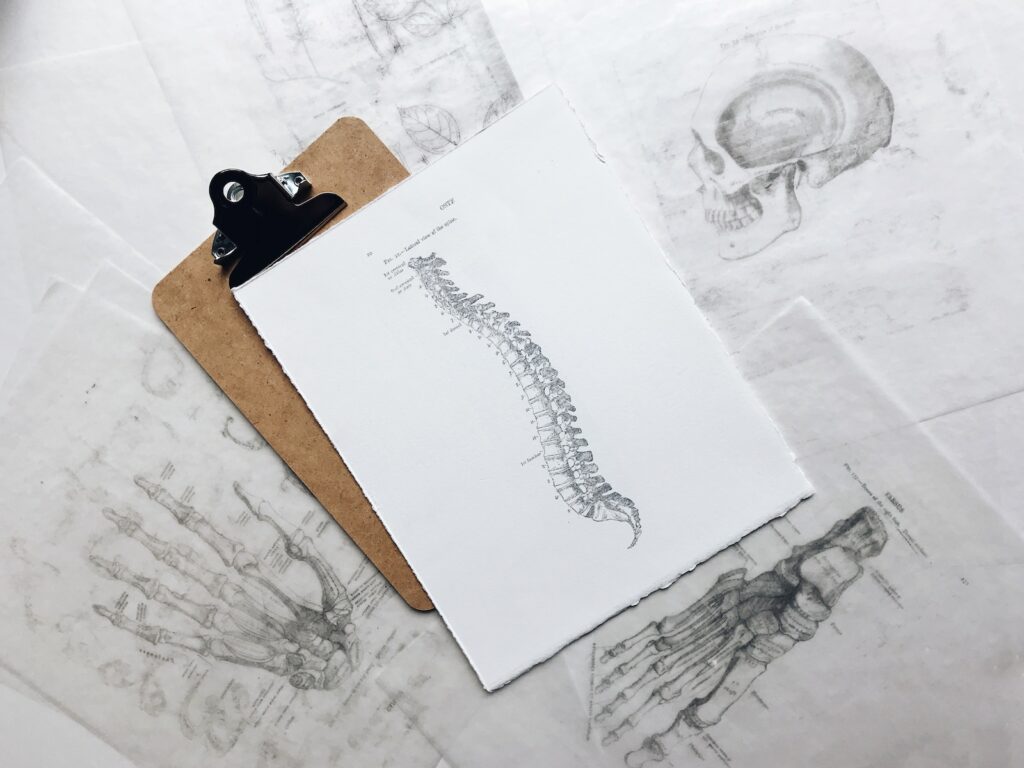This post was originally published on this site

Patients with osteoporosis may wonder if they can safely enjoy chiropractic care. Osteoporosis is a condition that causes bones to become brittle and fragile, making them more susceptible to fractures. Chiropractic care involves the manipulation of the spine and other joints to alleviate pain and improve mobility.
While some people with osteoporosis may be hesitant to seek chiropractic care, many chiropractors believe that it can be a safe and effective treatment option for those with the condition. However, it is important to note that individuals with osteoporosis may need to take certain precautions during chiropractic treatment to avoid further injury. For example, chiropractors may need to use gentler techniques and avoid applying too much pressure to the bones.
Overall, patients with osteoporosis should consult with their healthcare provider before seeking chiropractic care. A healthcare provider can evaluate the individual’s condition and provide guidance on whether chiropractic care is a safe and appropriate treatment option. With proper precautions, patients with osteoporosis may be able to enjoy the benefits of chiropractic care without risking further injury.
Understanding Osteoporosis
Osteoporosis is a condition that affects the bones, making them weak and more susceptible to fractures. It is often referred to as a silent disease because it progresses slowly and does not cause any symptoms until a fracture occurs. Osteoporosis can affect anyone, but it is more common in women, especially after menopause, and in older adults.
Bone density is a measure of the amount of minerals, such as calcium, in the bones. As people age, their bone density naturally decreases, but some people may experience a more significant loss of bone density, leading to osteoporosis. Low bone density is a major risk factor for osteoporosis, and it can be caused by a variety of factors, including genetics, lifestyle, and certain medical conditions.
Women are more likely to develop osteoporosis than men because they have smaller bones and lose bone density more rapidly after menopause. Men can also develop osteoporosis, especially if they have low levels of testosterone. Osteoporosis can also be caused by certain medical conditions, such as hyperthyroidism, and by the use of certain medications, such as corticosteroids.
The symptoms of osteoporosis can vary, but they often include back pain, loss of height, and a stooped posture. Fractures, especially in the hip, wrist, or spine, are also common in people with osteoporosis. These fractures can be debilitating and can significantly reduce a person’s quality of life.
In summary, osteoporosis is a condition that affects the bones, making them weak and more susceptible to fractures. It is more common in women, especially after menopause, and in older adults. Low bone density is a major risk factor for osteoporosis, and it can be caused by a variety of factors. The symptoms of osteoporosis can vary, but they often include back pain, loss of height, and fractures.
Chiropractic Care Overview
Chiropractic care is a non-invasive, drug-free healthcare practice that focuses on the diagnosis and treatment of musculoskeletal disorders, primarily those related to the spine. Chiropractors are healthcare professionals who specialize in the diagnosis and treatment of these disorders. They use a variety of techniques, including adjustments and spinal manipulation, to help patients relieve pain, improve mobility, and restore function.
Chiropractic adjustments involve the application of a controlled force to a joint in the spine or other parts of the body. This force is intended to restore proper alignment and function to the joint, which can help reduce pain and improve mobility. Spinal manipulation is a type of chiropractic adjustment that involves the use of a high-velocity, low-amplitude thrust to a joint in the spine. This technique is often used to treat conditions such as back pain, neck pain, and headaches.
Chiropractors are trained to diagnose and treat a wide range of musculoskeletal disorders, including those related to the spine, joints, muscles, and nerves. They may also provide advice on exercise, nutrition, and lifestyle modifications to help patients manage their condition and prevent future problems.
Doctor of Chiropractic (DC) is the degree earned by chiropractors after completing a four-year chiropractic program. Chiropractors must also pass a licensing exam in order to practice in their state.
While chiropractic care can be effective for many patients, it is not appropriate for everyone. Patients with certain medical conditions, such as osteoporosis, may need to avoid chiropractic adjustments or spinal manipulation. It is important for patients to discuss their medical history and any concerns they may have with their chiropractor before beginning treatment.
The Impact of Osteoporosis on Life Quality
Osteoporosis is a condition that affects the quality of life of patients. It is a chronic disease that causes bones to become weak and brittle, making them more susceptible to fractures. Patients with osteoporosis often experience pain, discomfort, and limited mobility, which can affect their daily activities and overall well-being.
One of the most common symptoms of osteoporosis is back pain. As the bones become weaker, they are more likely to fracture, causing pain and discomfort. Patients may also experience stiffness and limited range of motion in the affected areas, which can further limit mobility and affect posture.
Osteoporosis can also impact joint mobility, which can make it more difficult for patients to perform daily activities such as walking, climbing stairs, and carrying heavy objects. This can lead to a loss of independence and a decrease in overall quality of life.
In addition to physical symptoms, osteoporosis can also have a significant emotional impact on patients. The fear of falling and the potential for fractures can cause anxiety and depression, which can further affect daily activities and overall well-being. Patients may also experience a loss of confidence and a decrease in self-esteem, which can impact their relationships and social life.
Overall, osteoporosis can have a significant impact on the quality of life of patients. It is important for patients to work with their healthcare providers to manage their symptoms and maintain their mobility and independence. Chiropractic care can be an effective treatment option for patients with osteoporosis, but it is important to work with a qualified and experienced chiropractor who understands the unique needs of patients with this condition.
Chiropractic Care for Osteoporosis Patients
Chiropractic care is a non-invasive treatment option that may be helpful for patients with osteoporosis. Chiropractors use various techniques to help manage pain and discomfort associated with osteoporosis, such as spinal adjustments, massage therapy, and physical therapy. However, due to the fragility of the bones in individuals with osteoporosis, some caution is advised when considering chiropractic care.
Chiropractic manipulations apply pressure to bones, and people with osteoporosis may be advised to avoid chiropractic care. However, some chiropractors may use gentle techniques that are safe for patients with osteoporosis. Patients should discuss their condition with their chiropractor to determine if chiropractic care is a safe and effective treatment option for them.
Chiropractic care may also include other treatments, such as massage, stretching, and exercise. Exercise is an important part of any treatment plan for osteoporosis patients, as it can help improve balance, flexibility, and strength. However, patients with osteoporosis should avoid high-impact exercises and activities that may increase the risk of fractures.
Soft tissue therapy, such as massage, can also be helpful for osteoporosis patients. Massage can help improve circulation, reduce muscle tension, and promote relaxation. Physical therapy may also be recommended to help improve mobility and function.
In conclusion, chiropractic care may be an effective treatment option for osteoporosis patients, but caution is advised. Patients should discuss their condition with their chiropractor to determine if chiropractic care is a safe and effective treatment option for them. Chiropractic care may include various techniques, such as spinal adjustments, massage therapy, and physical therapy, and may also incorporate exercise and soft tissue therapy.
Risks and Precautions in Chiropractic Treatment
Chiropractic care can be an effective treatment option for individuals with osteoporosis, but it is not without risks. The fragility of the bones in individuals with osteoporosis can make them more susceptible to fractures during chiropractic adjustments. Here are some of the risks and precautions to consider when seeking chiropractic care for osteoporosis:
Fractures
Individuals with osteoporosis have a higher risk of fractures, and chiropractic adjustments can potentially increase that risk. Manipulation of the spine and other joints can put stress on the bones, which can lead to fractures. Therefore, chiropractors may use gentler techniques or avoid certain areas of the spine when treating individuals with osteoporosis.
Falls
Falls are a significant risk for individuals with osteoporosis, and chiropractic adjustments can sometimes increase the risk of falls. Dizziness or lightheadedness can occur after an adjustment, which can increase the risk of falling. Therefore, individuals with osteoporosis should be careful when getting up after a chiropractic adjustment and should wait until they feel steady on their feet.
Force
Chiropractic adjustments involve the application of force to the joints. For individuals with osteoporosis, this force can be too much and can lead to fractures. Therefore, chiropractors may use gentler techniques or avoid certain areas of the spine when treating individuals with osteoporosis.
Precautions
Chiropractors who treat individuals with osteoporosis should take certain precautions to ensure their safety. These precautions may include:
- Conducting a thorough medical history and physical examination to identify any contraindications to chiropractic care
- Avoiding high-velocity, low-amplitude (HVLA) adjustments, which involve a sudden thrust, in favor of gentler techniques
- Avoiding manipulation of areas with low bone density or areas with a high risk of fracture
- Encouraging patients to report any new or increased pain, discomfort, or other symptoms after a chiropractic adjustment
Overall, chiropractic care can be a safe and effective treatment option for individuals with osteoporosis, but it is essential to take precautions to minimize the risk of fractures and other complications. Individuals with osteoporosis should work closely with their healthcare provider and chiropractor to determine the best course of treatment for their specific needs.
Lifestyle Factors and Osteoporosis
Lifestyle factors play a crucial role in the development and management of osteoporosis. Patients with osteoporosis can benefit from making certain lifestyle changes to help manage their condition.
Smoking and Alcohol Consumption
Smoking and excessive alcohol consumption are risk factors for osteoporosis. Patients with osteoporosis should quit smoking and limit their alcohol intake to promote bone health.
Balance and Fall Prevention
Patients with osteoporosis are at an increased risk of fractures due to falls. It is important for patients to maintain good balance and take steps to prevent falls. This can include using assistive devices such as canes or walkers, wearing proper footwear, and removing tripping hazards in the home.
Nutrition and Lifestyle Habits
A healthy diet rich in calcium and vitamin D is important for maintaining bone health. Patients with osteoporosis should also limit their caffeine intake and avoid consuming too much sodium. Additionally, maintaining a healthy weight and getting enough sleep are important lifestyle habits for managing osteoporosis.
Physical Activity
Weight-bearing exercise and muscle-strengthening activities are important for maintaining bone health and preventing fractures. Patients with osteoporosis should engage in regular physical activity, but should consult with their healthcare provider to determine the most appropriate exercise regimen.
Overall, patients with osteoporosis can benefit from making certain lifestyle changes to help manage their condition. By quitting smoking, limiting alcohol intake, maintaining good balance, eating a healthy diet, and engaging in regular physical activity, patients can promote bone health and reduce their risk of fractures.
Nutrition and Supplements for Bone Health
Maintaining optimal bone health is essential for patients with osteoporosis. A calcium-rich diet is important to prevent osteoporosis and maintain bone health. According to Mayo Clinic, the recommended daily intake of calcium for adults is 1,000 milligrams (mg) per day, and for women over the age of 50 and men over the age of 70, it is 1,200 mg per day. Calcium is essential for building and maintaining strong bones.
Vitamin D is also important for bone health as it helps the body absorb calcium. The recommended daily intake of vitamin D for adults is 600-800 international units (IU) per day. However, some people may require higher doses of vitamin D to maintain optimal bone health.
In addition to calcium and vitamin D, there are other supplements that can help improve bone health. Mayo Clinic suggests that patients with osteoporosis may benefit from taking calcium and vitamin D supplements, especially if they are not getting enough from their diet. However, it is important to talk to a healthcare provider before starting any supplements.
There are also medications available for the treatment of osteoporosis. These medications work by slowing down bone loss or increasing bone density. However, they may have side effects, and it is important to discuss the risks and benefits with a healthcare provider before starting any medication.
Dietary changes can also help improve bone health. Eating a diet rich in fruits, vegetables, and whole grains can provide the body with the nutrients it needs to build and maintain strong bones. Additionally, consuming adequate amounts of protein can help improve bone health.
In conclusion, patients with osteoporosis can benefit from a calcium-rich diet, vitamin D supplements, and medications prescribed by a healthcare provider. Dietary changes and consuming adequate amounts of protein can also help improve bone health. It is important to talk to a healthcare provider before starting any supplements or medication.
Other Factors Affecting Osteoporosis
Osteoporosis is a complex condition that can be influenced by various factors. Some of these factors include sex, age, family history, and nutritional deficiencies. In addition, certain medical conditions and medications can also impact bone health.
One of the most significant factors that affect osteoporosis is menopause. During menopause, women experience a decline in estrogen levels, which can lead to a decrease in bone strength. As a result, women are more likely to develop osteoporosis than men.
In addition to menopause, other medical conditions can also impact bone health. For example, individuals with celiac disease, rheumatoid arthritis, or inflammatory bowel disease may have a higher risk of developing osteoporosis. Similarly, individuals who use steroids for an extended period may also be at risk of developing osteoporosis.
Nutritional deficiencies can also play a role in the development of osteoporosis. For instance, individuals who do not consume enough calcium, vitamin D, or other essential nutrients may be more likely to develop osteoporosis. As such, a holistic approach to bone health that includes appropriate nutrition and training is essential.
Other factors that can impact bone health include cancer, surgery, and arthritis. Individuals who have undergone cancer treatment or certain surgeries may also be at risk of developing osteoporosis. Similarly, individuals with arthritis may experience joint pain and stiffness, which can impact their ability to exercise and maintain bone strength.
Despite these factors, it is important to note that osteoporosis can be treated and managed effectively. Chiropractic care can be a valuable tool in this regard, helping to improve bone density, mobility, and reduce pain and stiffness. However, it is essential to work with a qualified chiropractor who has experience working with individuals with osteoporosis.
Conclusion
In conclusion, chiropractic care can be beneficial for patients with osteoporosis. While there is some debate on the effectiveness of chiropractic care for osteoporosis, studies have shown that it can improve bone density, mobility, and reduce pain and discomfort associated with the condition.
It is important for patients with osteoporosis to consult with their healthcare provider before seeking chiropractic care. Chiropractors may need to modify their techniques to avoid applying pressure to bones that are weakened by osteoporosis. Patients with severe osteoporosis or a history of fractures may need to avoid chiropractic care altogether.
Overall, chiropractic care can be a safe and effective complementary therapy for patients with osteoporosis. It is important for patients to communicate with their healthcare providers and chiropractors to ensure that they are receiving the best treatment for their individual needs.


